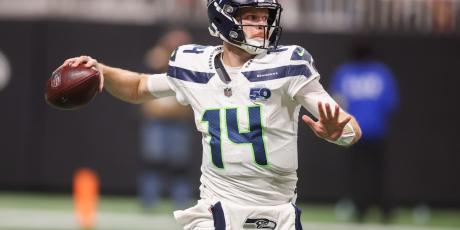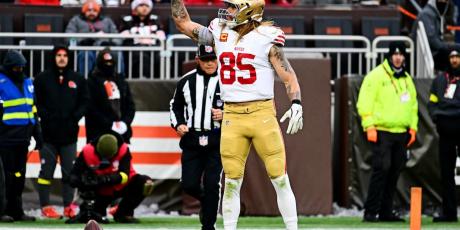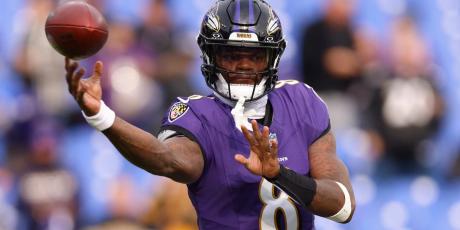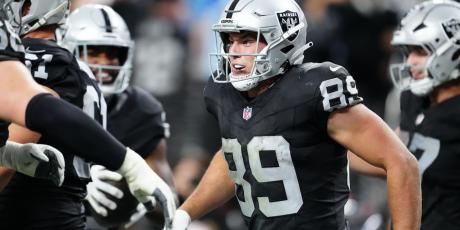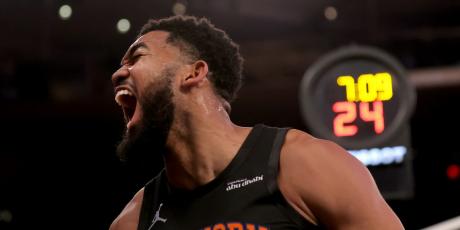TJ's #Taek: Week 9 NFL DFS Recap

Week 9’s winning lineups from the biggest contests on FanDuel and DraftKings can be used to tease out lineup-building strategies and offer clues on how you could have landed on a similar team. Reviewing your hits and misses each week is imperative if you want to be a profitable DFS player but examining winning lineups is also a useful exercise in cultivating a winning approach.
DraftKings Week 9 Millionaire Winning Lineup
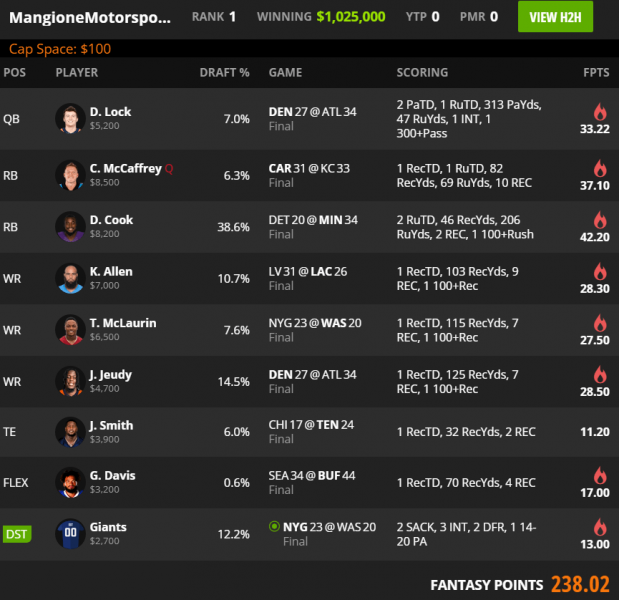
For the second straight week, an extreme stars-and-scrubs lineup build topped the Millionaire, this time to pay up for the two most expensive running backs on the slate. The strategy of rostering two bellcow backs has dominated DFS in recent years, but hasn’t been as successful in 2020. When there are two players who see such a big workload relative to the field, implementing this strategy is always going to be in play, especially when one of those players is expected to be as unpopular as CMC was in Week 9.
This was the first time this season that the Millionaire winner paid less than $6,000 for their quarterback, freeing up salary to pay for two high-volume receivers to go along with the workhorse backs.
While Week 9 wasn’t a great week for chalk, Cook’s near-40% ownership drove the average of this lineup up to 11.5%, almost exactly the average ownership of all winning lineups through nine weeks.
What Were the Indicators for the Low-Owned Plays?
The only concern with Christian McCaffrey was whether or not he would return to his normal workload—he is the most game-script-proof running back in the game. That concern was more than offset by his projected ownership and knowing his volume ceiling made him a must for anyone playing mass multi-entry, even if it only meant a few shares.
Wide receiver upside comes from volume and high-leverage targets, and Terry McLaurin has seen both all year. Going into Week 9, McLaurin was top three in target share with one of the highest average depth of targets among players averaging at least seven targets per game. Pat James and I both considered McLaurin cash viable, but the public clearly didn’t see it that way. Playing any player against the opposing defense is rarely a strategy to use outside of showdown or very small slates, but it was likely just a salary play against a bad quarterback. Wide receivers don’t necessarily correlate with how well their offense does overall.
Finding a contrarian player in a game that will be heavily stacked is always going to be a great tournament strategy, even if there aren’t many indicators for that particular player. Josh Allen was expected to be one of the top quarterbacks of the week and both of his primary receivers would draw some ownership in team stacks. Playing a one-off with Gabriel Davis was a great leverage play against one of the worst secondaries in recent memory.
FanDuel Week 9 Sunday Million Winning Lineup
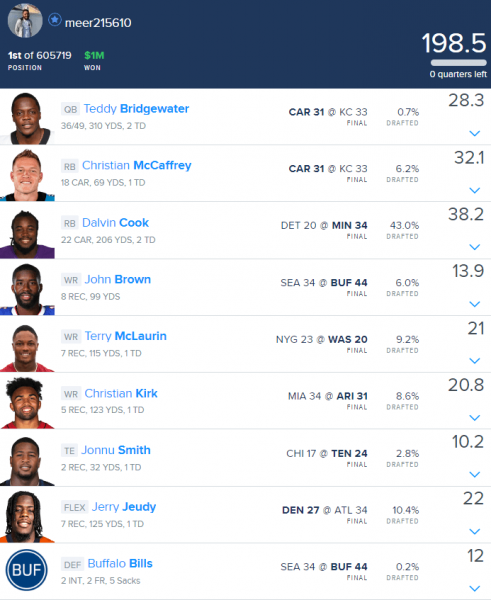
Against Kansas City’s tough secondary, pairing Teddy Bridgewater with the best pass-catching back in the league is almost as good as a traditional QB/WR stack in a game where Carolina would likely be throwing more than usual. Bridgewater’s ownership combined with a sub-1% Bills defense led to a lineup with an average ownership of just 9.7%, tying Week 8’s lineup for the lowest of the year.
After seeing very high average ownership in winning FanDuel lineups compared to those on DraftKings, the two have converged. The average ownership for all winning Sunday Million lineups this season is 12.7%, compared to 11.6% for DraftKings Millionaire lineups. These numbers are in line with what we’ve seen in previous seasons, suggesting that the high ownership seen on FanDuel may have been an aberration, and not a function of salary as I had suggested in this space previously.
TJ’s Final #Taek
One of our signature metrics at 4for4 is schedule-adjusted fantasy points allowed, a metric that uses a rolling 10-week window. This makes sure the data stays relevant—so much has changed since Week 1 in terms of depth charts, schemes and coaching, that throwing out early-season data is not only acceptable but sometimes necessary. With half of the season behind us, most of my research moving forward will focus on 4–6-week windows, depending on the situation, and sometimes even smaller samples. Like 4for4's schedule-adjusted metric, I always want to look for the most relevant data.
Anyone who only looks at season-long target numbers may have very well missed out on playing Jerry Jeudy last week, for example. Weighted against full-season data, we can get a more accurate representation of a team’s strengths and weaknesses than our opponents who solely rely on readily available season-long statistics



